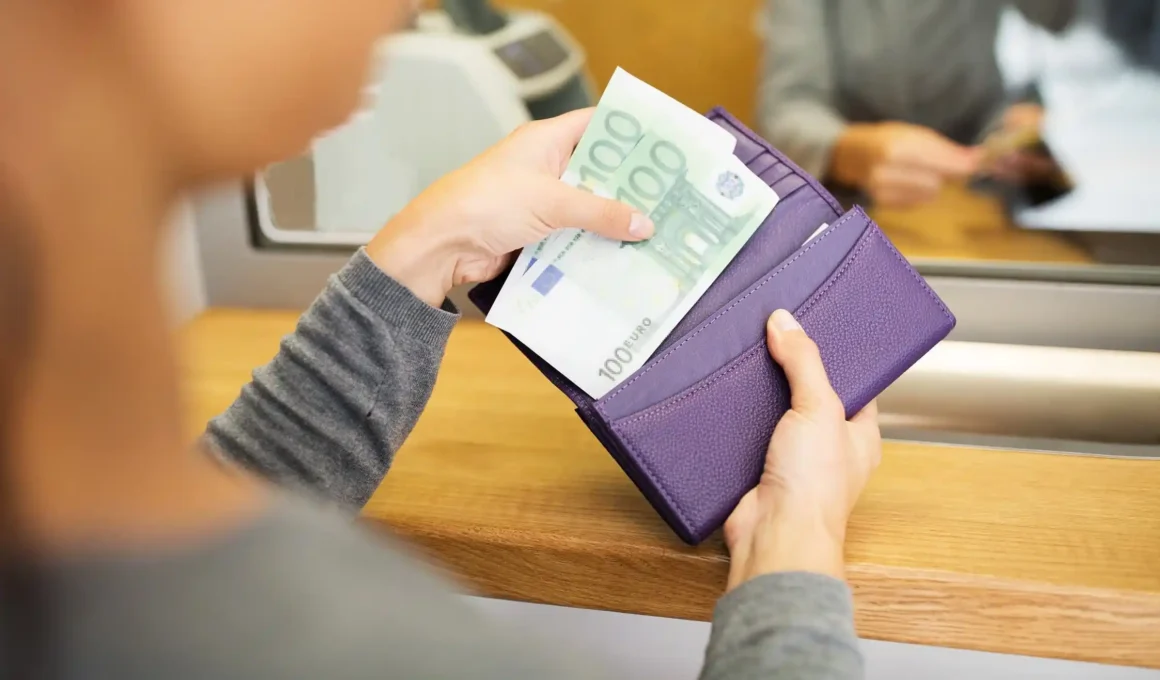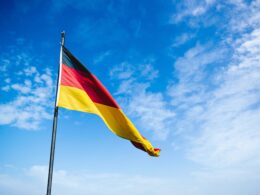Table of contents Show
When visiting the Czech Republic, make sure to know where to exchange money in Prague, especially in popular areas like the town square, to ensure a smooth and hassle-free experience during your stay. Restaurants and hotels in Prague accept most major credit cards, such as Visa, Mastercard, and American Express.
Evolution of the Czech currency
There are two types of currency in Prague: banknotes and coins.
The currency called krone in German and koruna in Czech was introduced in the Austro-Hungarian Empire in 1892, the empire to which the present territory of the Czech Republic belonged, and is considered the first modern gold coin of the Austria-Hungary empire.
The Czechs have been using the koruna since the end of the 19th century when the country was under the rule of the Austro-Hungarian Empire. The use of this currency continued after World War I when the defeated imperial power dissolved into numerous states.
The map of Central and Eastern Europe became a complex patchwork of small countries, one of which was Czechoslovakia. This state and its new currency, the Czechoslovak koruna, would eventually become part of the Soviet bloc until 1993.
After the creation of an independent Czechoslovakia in 1918, there was an urgent need to establish a new monetary system. In 1919, a currency reform defined the new koruna with similar value to the Austro-Hungarian koruna. The first banknotes began to circulate in the same year, while coins began to circulate in Czechoslovakia in 1922, three years later. This first koruna circulated until 1939, when new korunas were introduced for Bohemia, Maravia and Slovakia.
Much later, on January 1, 1993, after the fall of the Iron Curtain, the citizens of this newly created state regained their freedom and amicably agreed to a kind of divorce. Thus, the destinies of the two nations were separated: Slovakia on the one hand and the Czech Republic on the other.
It was precisely in that year that the Czech Crown (ISO code 4217 CZK and symbol Kč), heir to the Czechoslovak Crown, was born. The official name of the currency of the Czech in the local language is koruna česká.
The Czech Republic agreed with the European Union to replace the koruna with the euro in 2012. However, strong domestic opposition in the country has indefinitely delayed the changeover to the common European currency.
Prague’s currency: What is the currency in Prague?
What is the currency for Prague? Many tourists appear to be clueless when it comes to Prague’s currency. That makes perfect sense. Because of its modest size, currency used in Czech Republic is not as widely recognized as other currencies, such as the euro.
Czech koruna, sometimes known as the Czech crown, is the official currency of the Czech Republic. The Czech is yet to adopt the euro even though it is a European Union member.
The Czech National Bank (CNB) serves as the country’s central bank. The CNB determines monetary policy in conformity with its overarching mission. In addition to issuing money, it also controls the monetary supply, the payment system, and bank-to-bank settlements. It is responsible for issuing banknotes and coins.
Banknotes come in denominations of 100, 200, 500, 1000, 2000, 5000 CZK.
Coins come in 1, 2, 5, 10, 20 and 50 CZK.
What is the Czechoslovakia currency: Facts about the Czech Crown
The following are some quick facts about the money of Czech Republic that you should know before you visit.
1. The name of the Czech crown money is koruna eská (Czech crown). Czech crowns is the standard English term for currency of Chech Republic.
2. The Czech Republic does NOT use the Euro as its legal tender. You can use Euros at some stores and eateries, but not everywhere. Crowns can be used with less effort and expense.
3. There are 12 different types of crown banknotes and coins available (1, 2, 5, 10, 20, and 50 cents, 1, 2, 5, 10, 20, and 50 crowns) (100, 200, 500, 1000, 2000 and 5000). As their worth rises, so does the size of each.
4. Each Czech Koruna is equivalent to 100 Hálé. Like cents, but no longer legal tender because they’ve been retired. However, you may notice that certain retail prices include the symbol halé. An example price tag could be 24,90 K. This, however, merely denotes the value of 25 K. Amounts more than fifty cents are rounded up to the next crown.
If you’re wondering how to spend Czech Crowns, these useful tips will help you save cash in Prague
- Do not overdo the tipping. In general, Czechs are not known for their generosity with tips. To them, simplicity and understatement are virtues. For instance, if the total comes to 480 K, you can pay 500 K. It’s possible that some people will leave even smaller tips. In most cases, a 10% gratuity is adequate. This includes eateries and cabbies.
- Keep an eye out for swindlers! Money can easily be lost in crowded places. Take no more cash with you than is absolutely necessary.
- Money transfers, bank cheques, and traveler’s cheques are NOT accepted anywhere. While traveler’s cheques still exist, the convenience they provided in years past has largely disappeared.
- Visiting Prague in the wintertime will help you save a lot of money. Bargains can be found anywhere. In the months of November and February, accommodations are typically unoccupied, therefore many Last Minute discounts are available.
Current exchange rates for the Czech Koruna

The current exchange rate for the official currency of the Czech Republic is
EUR 24,340
USD 21,450
What is the best currency to take to Prague?
Currency is one of the things you need to take care of before you head out to Prague. Whether you’re travelling with a friend, your family or partner, or travelling solo to focus on work, take Czech crown with you.
Exchanging money at ATMs and banks
The best way to obtain Czech currency is through an ATM affiliated with a bank. There are also exchange offices in the city, both within banks and independent. To make sure that the exchange rate you receive is fair, check the Czech National Bank’s average rate. Exchange offices shouldn’t charge any commission for currency exchange transactions, and a printed receipt must be provided for each transaction.
In the city center you will have no problem finding banks and ATMs. Banks are open Monday to Friday from 8:00 am to 5:00 pm.
Paying by card in Prague
The safest way to save on commissions is to pay by credit card since when paying by card the exchange rate is the current rate and the maximum commission is usually 1%. But it is always better to ask at the establishment if they accept credit cards. Although some places accept euros.
If you arrive in Prague and do not have Czech currency, it is advisable to change the minimum necessary until you can go to one of the exchange houses that we recommend above, or withdraw from an ATM as the commission is usually very low.
Who is on the Czech banknotes?

The colorful banknotes of the Czech Republic feature the faces of renowned Czech personalities known for their contribution to Czech culture and identity.
The first banknotes were those of the First Czechoslovak Republic, created in 1918 and were the product of a political decision of the then Czechoslovak Prime Minister Vaclav Klaus and the Slovak leader Vladimir Meciar.
The following banknotes were issued in 1993 for the Czech Republic and showed prominent Czech people on one side and abstract compositions on the other.
Among the people featured on the banknotes were famous people such as Tomáš Masaryk, the first Czech president, and Charles IV, the king of Bohemia. The backs of the banknotes feature intricate compositions of Czech buildings, such as St. Vitus Cathedral and Charles University. The coat of arms of the Czech Republic also appears on the reverse of all Czech banknotes.
The individuals featured on the banknotes are known for their achievements and contributions to Czech culture and the country. Some of them include:
100 Kč – Charles IV
Charles IV was the king of Bohemia from 1346 to 1378. He is widely regarded as the father of the country and his reign is remembered as the Golden Age of Bohemia.
1000 Kč – František Palacký
František Palacký was a Czech historian known for his historical works and his political activism. He is considered one of the fathers of the nation along with Charles IV and Tomáš Masaryk
200 Kč – John Amos Comenius
John Amos Comenius was a Czech philosopher and teacher and is widely considered the father of modern education.
2000 Kč – Emmy Destinn
Emmy Destinn, was an opera singer born in Prague in the 19th century.
500 Kč – Božena Němcová
Božena Němcová was a Czech writer of the Czech National Revival movement.
5000 Kč – Tomáš Masaryk
Tomáš Masaryk was the founder and first president of Czechoslovakia. He helped to establish the Czechoslovak Legion, a volunteer armed forces which fought against the Austrians. He is considered a symbol of democracy to this day.
What amount of money should I have with me?
Credit cards are widely accepted in shops, restaurants, and hotels. Only small businesses such as newsstands, street vendors and neighborhood shops require cash payments. So you should only keep a small amount of cash on you as you can get by mostly with cards.
Finding great accommodation in Prague doesn’t need to be expensive. Check out our guide How to find a cheap accommodation in Prague for some useful tips on how to do just that!
Using and Exchanging Currency in the Czech Republic
The currency of Czech Republic is the Czech crown (CZK). It is widely accepted in restaurants and hotels throughout the country, and visitors can easily exchange their money at banks, exchange offices, or ATMs. It is important to note that street vendors may not accept larger bills, so it is a good idea to have smaller denominations on hand if you plan on buying goods or services from them. It is also advisable to exchange money at official exchange offices, as exchanging money on the street can be risky due to the prevalence of counterfeit bills. Overall, it is relatively easy to use and exchange the Czech crown in the country, and visitors can enjoy their stay without worrying about currency issues.





